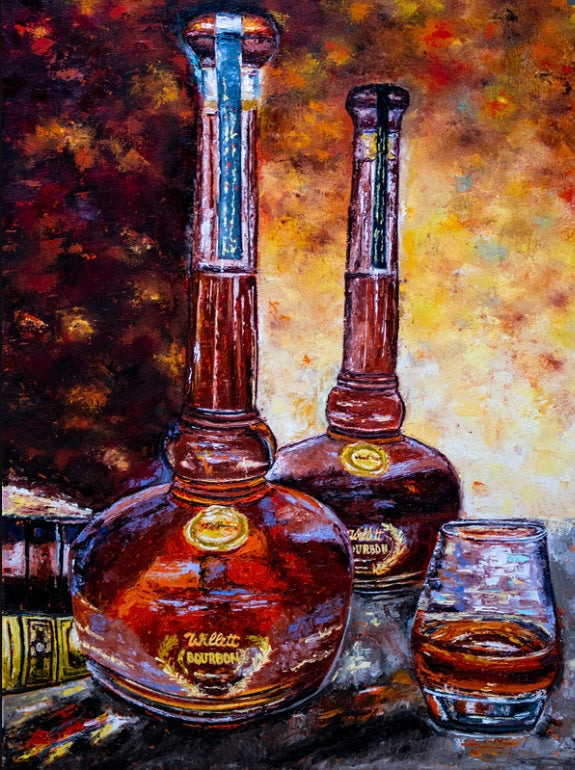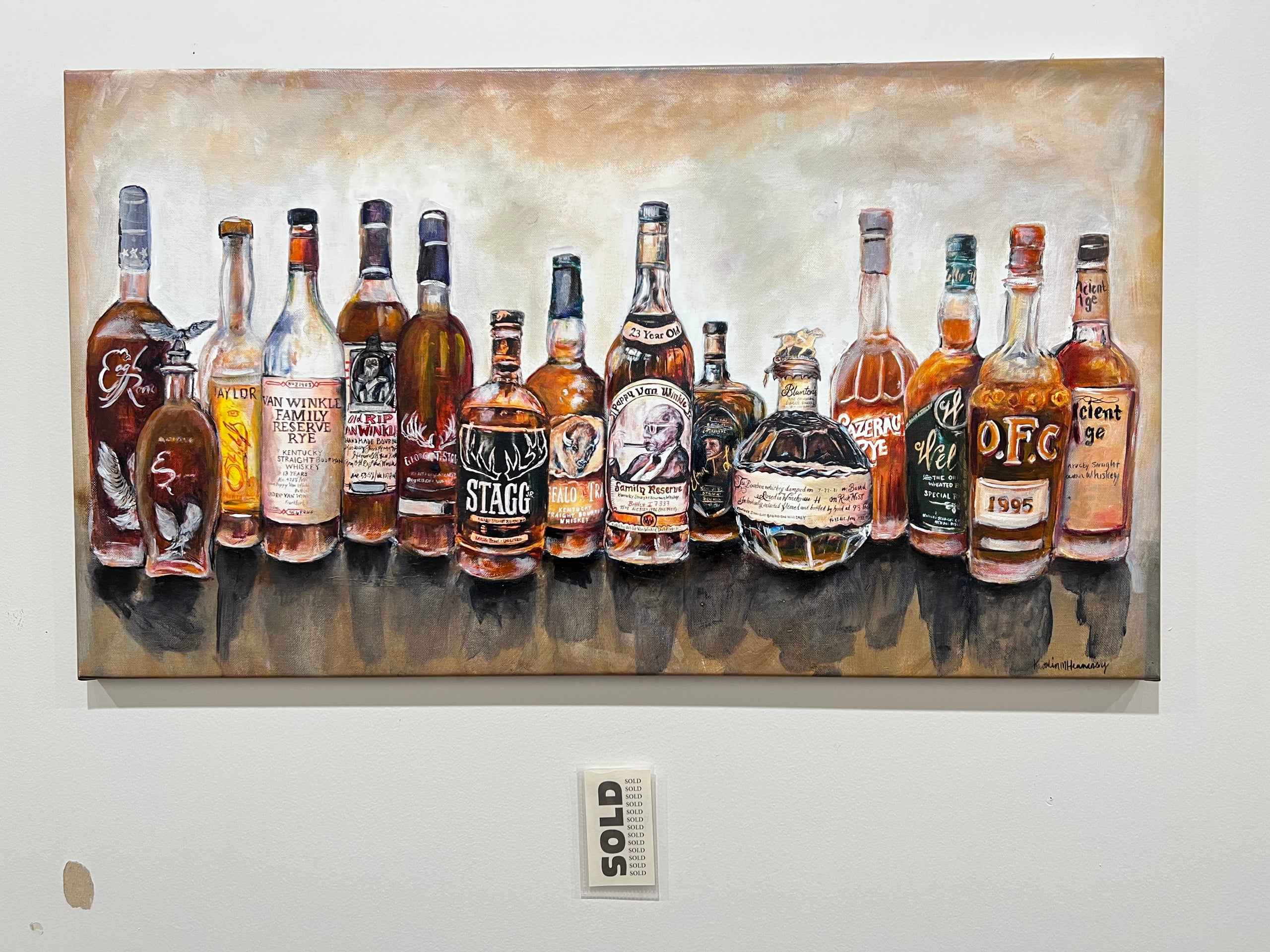Whiskey Art: Capturing the Significance of Distillation in Every Brushstroke
Whiskey Art: Capturing the Significance of Distillation in Every Brushstroke
Blog Article
The Value of Whiskey Art in Celebrating Heritage and Craftsmanship in the Beverage Sector
The complex partnership in between scotch art and the party of heritage and craftsmanship within the beverage sector can not be overstated. Through attentively made tags and bottles, whiskey brands envelop their historic roots and the artisanal skills that specify their manufacturing methods.
The Historical Origins of Whiskey
At the heart of bourbon's allure exists a rich tapestry of historic roots that trace back to ancient worlds. The origins of scotch can be connected to the purification practices of the Sumerians and Babylonians around 2000 BCE, where early forms of fermented grain drinks began to emerge. Nonetheless, it remained in the Middle Ages that the art of distillation advanced significantly, particularly in Ireland and Scotland, leading to the creation of scotch as we understand it today.
The term "whiskey" itself acquires from the Gaelic word "uisce beatha," implying "water of life." This expression underscores the social value of scotch in Celtic cultures, where it was typically connected with routines, parties, and common bonding. By the 15th century, distillation became an acknowledged craft within monastic neighborhoods, leading the way for the facility of lawful distilleries.
As trade routes expanded, bourbon's appeal expanded, transcending local boundaries and catching the rate of interest of connoisseurs worldwide. Bourbon Art. This historic journey shows not just the workmanship behind scotch production however likewise its important function in cultural and social contexts, marking it as a considerable drink throughout history
Artistic Expression in Branding
Bourbon branding stands as an engaging crossway of creativity and business, where aesthetic identification plays a vital role in shaping consumer understanding. The aesthetics of whiskey labels, packaging, and advertising and marketing products reflect not only the brand's tale but also its core values and heritage. Through creative expression, distilleries share a story that resonates with consumers, evoking feelings and sparking links.
Making use of shade, typography, and imagery in branding serves to set apart items in a saturated market. For instance, standard motifs might evoke a sense of authenticity and workmanship, while contemporary layouts can signify technology and forward-thinking. This tactical imaginative instructions improves brand name acknowledgment and commitment, allowing customers to forge an individual connection with the whiskey they select.
In addition, creative expression in branding often acts as a party of local heritage. Distilleries often incorporate local symbols or historic references into their layouts, creating a feeling of location that invites consumers to take part in a wider cultural experience. Ultimately, the virtuosity behind whiskey branding not just improves visual charm yet likewise enriches the total story of the brand, fostering a much deeper recognition for the workmanship and heritage embedded in each bottle.
Workmanship in Container Design
The artistry obvious in scotch branding expands beyond aesthetic identity to encompass the workmanship included in bottle layout. Each container functions as a vessel not simply for the spirit within, yet likewise for the tale it outlines its custom, high quality, and origin. The design process requires precise attention to detail, as aspects such as closure, shape, and product add dramatically to the overall assumption of the bourbon.
Workmanship in container style includes choosing high-grade glass that can boost the whiskey's color and quality, while likewise offering a responsive experience for the consumer. The shape of the bottle need to be both cosmetically enticing and functional, usually reflecting the heritage of the brand. Several distilleries decide for distinct forms or printed logo designs that stimulate a feeling of credibility and background.
Furthermore, the tag layout and typography play a vital duty in connecting the brand name's story. Whiskey Art. A well-crafted bottle not just captivates the consumer's eye but additionally enhances the brand's commitment to quality and custom. By doing this, the workmanship of bottle layout becomes a vital aspect of the scotch experience, merging creativity with an extensive regard for heritage
Cultural Relevance of Bourbon Art
Celebrating tradition and craftsmanship, the social relevance of bourbon art goes beyond simple looks, intertwining with the social and historic narratives of the areas from which it comes from. Each bottle serves as a canvas, portraying the unique tales, mythology, and practices that have actually shaped regional whiskey-making practices. The detailed styles usually show the heritage of the distillers, integrating icons and themes that resonate with the society and values of their neighborhoods.

In addition, whiskey art i was reading this plays an essential duty in communal celebrations and celebrations, acting as a substantial link in between individuals and their shared experiences. By valuing the creativity in whiskey product packaging, consumers grow a much deeper understanding and regard for the craft, ultimately enriching their enjoyment of the drink itself.
Modern Trends in Bourbon Discussion
Recently, the discussion of whiskey has evolved to reflect modern tastes and fads while still honoring conventional workmanship - Realism Art. Distilleries are progressively concentrating on aesthetic aspects that boost the total drinking experience, linking the space in between heritage and modernity
Cutting-edge bottle designs have emerged, commonly incorporating sustainable materials and imaginative tags that inform compelling tales. Several brand names currently team up with neighborhood musicians, instilling their products with special aesthetic expressions that resonate with consumers. Furthermore, limited-edition launches are frequently packaged in collectible containers, including value and allure for lovers.

Final Thought
To conclude, whiskey art functions as an essential channel for sharing the heritage and workmanship integral in the beverage sector. Through intricate branding, innovative container styles, and culturally substantial creative components, whiskey brand names efficiently honor their traditions and link with customers. This artistic narrative not only raises the admiration of whiskey yet likewise strengthens neighborhood identification and satisfaction among manufacturers. Eventually, bourbon art plays a vital function in preserving and commemorating the rich cultural tapestry of whiskey-making.


Workmanship in bottle style entails choosing premium glass that can enhance the bourbon's color and clarity, while also giving a tactile experience for the consumer. In this method, the workmanship of container layout becomes a vital element of the bourbon experience, combining creativity with an extensive regard for heritage.
In conclusion, scotch art serves as an important channel for revealing the heritage and craftsmanship fundamental in the drink market.
Report this page